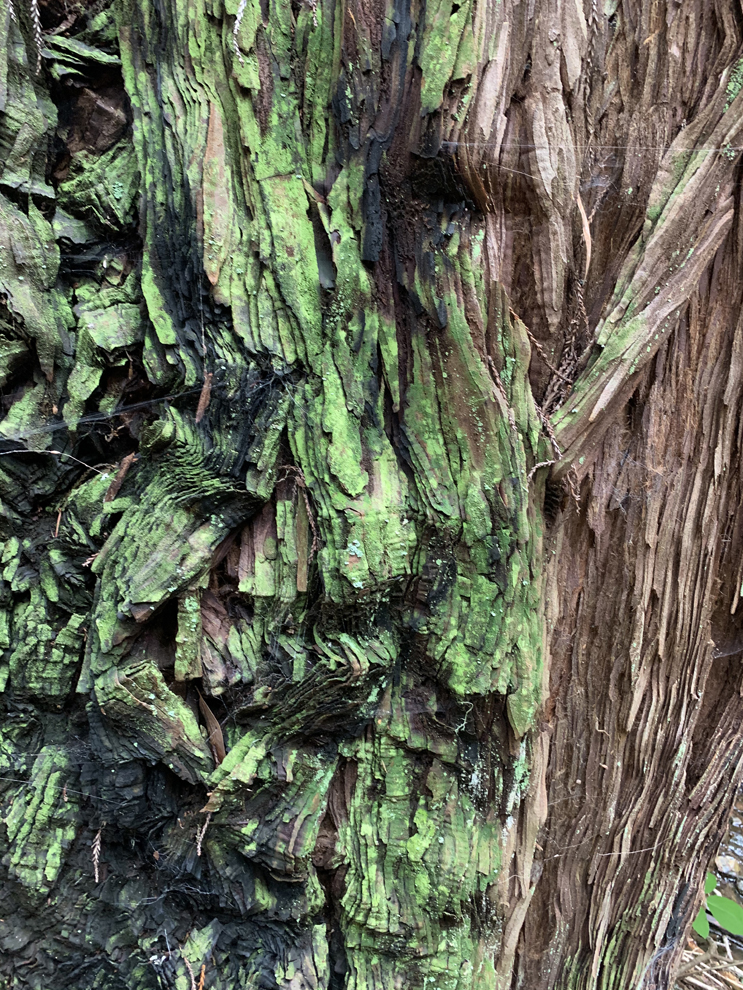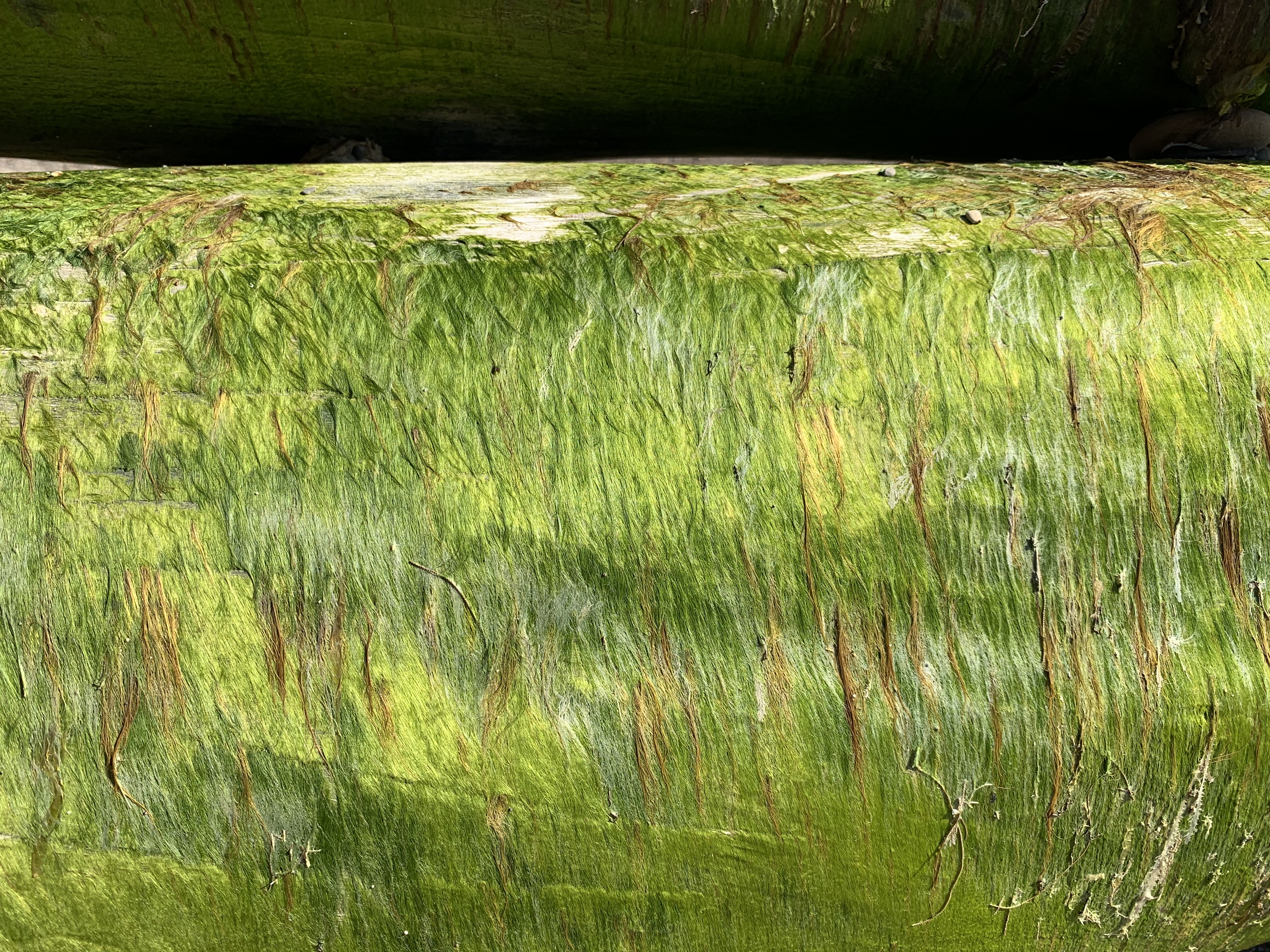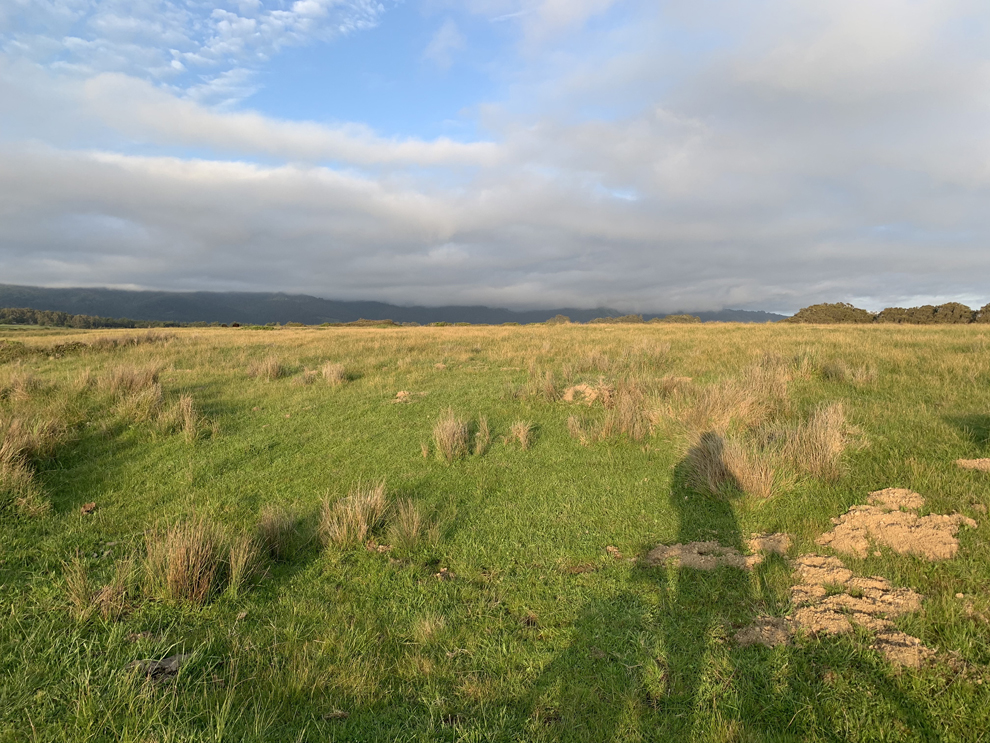Not only does the forest operate on the principle of abundance for all and communal resource sharing to maintain health and vitality; the forest has also evolved since Devonian days to optimize for the production and exchange of these resources. There lives a lot of wisdom in the forest. Depending on the age of the tree and their position/role in the canopy community—the production, use, and exchange of resources has ecologically evolved (via natural selection) to optimize energy and access to resources. So, this part of the tree’s story seems best told in a life linear way–from the time the tree was just a seed until it grew to be quite old and gray.
The Seedling
Beginning with the beginning of life, the seed- whether literally blasting forth from a heated (serotinous) cone or traveling in the gut of a bird or a squirrel who calls the tree home; or following the wind currents of a maple wing on the winds of a prayer, the self-sustaining seed will finally find ground to settle somewhere. Quite a miracle indeed, the seed contains all the energy and nutrient resources, to sprout life below ground that it would need. And imagine this, many trees will mass coordinate their seeding and fruiting activity as a forest—all for one and one for all… all at the right spring time (or if the species only fruits every few years, all in the same year to preserve precious resources in harsh or limited environmental conditions), when the light and seasonal conditions are prime. Why? Again, the trees know that we be forest. We are family … and when we all thrive, the forest stays alive.
That said, competition among individuals is healthy and clear; especially for a tree in its younger year. Thus, the sapling generation is naturally driven to the light and races to the top of the canopy to compete for that spotlight. But along the way as they grow, they benefit the forest, greatly you know, because they photosynthesize and breathe back, feeding the forest at this age the most and strengthening the tree tribe from an infection or bark beetle attack. Then, reaching the age of maturity, the adult trees become increasingly more careful in balancing their photosynthetic flush and belly-bole (tree trunk) outgrowth in order to optimize the ratio between offensive nutrition intake and forest green out-take with wind resistant stems. There is a reason that philosopher kings from Plato to Buddha to Jesus to Mohammed taught under the tree and found enlightenment there. Trees exude wisdom. They intuitively know that to live long and leave a legacy they need a robust, insect resilient, fire retardant, bark protected tree stem and a sufficient canopy of green biomass to feed the whole tree ecosystem of roots or shoots or mycelia connected living plants and critters or reproductive cones and flowers that the tree gifts food, water, oxygen, and shelter against snow showers.
Somehow coded in the DNA and genes of that small forest seed, the mature tree intuitively knows that natural disturbances are part of the forest life game, so ensures it has just enough resource to thwart an infection or infestation or storm or forest fire, aflame. Thus, as the tree gets older and becomes an elder, she will now grow very slow (if at all), knowing that not every vital phloem cell will flow with that essential sap to repair any branch gap due to a thunderous lightning clap. The good news is that with this accumulated age and experience all lived in one place comes the accumulated history and wisdom that no younger tree or forest visitor can replace. Knowledge over time from navigating a natural disturbance sheltering in place—a fire, a flood, or a storm, gives the tree (and all who listen to thee) a distinct advantage to keep protected and more resilient against any future threat the tree or forest of family might face.

Then my favorite tree efficiency story lies within its core. Eager to hear more? Well, as most trees mature and have reached quite a nice height to establish a healthy green canopy and absorb sufficient sunlight; they slow their growth upward and begin to spin, within. Essentially, mature trees—the enlightened ones, build resilience with reduced cells and resources by a twist of the stem’s wrist…and in that way, they avoid the chronic old age stem’s hunched over forward list. But, they don’t just randomly twist. In order to semi-retire in their elder years and still resist the wind; there is a specific pattern and precise motion to optimize the tree’s altered mature state and magic tensile strength potion. Many subalpine trees as from my ecology studies I recall, twist each outer plant cell wall, 23.50. I also believe this degree for the tree may even be aligned with Fibonacci’s natural law, but you should check me and see. Anyway, astute urban architects, planners, and developers (e.g. Vanke, the largest real estate developer in China) who have studied the forest have succeeded brilliantly in constructing sky scrapers copied from life’s play book on optimizing tensile strength to resist earthquakes and wind storms in cities like; Dubai, London, San Francisco, Singapore, Hong Kong, and Shanghai — from tree to tree and sea to sea, incidentally making billions of dollars off nature’s intelligence for free. Then further imagine, what if we built the buildings of our future cities as functioning forests, entirely? Dickson Depommier (senior counsel to Aerofarms and educator at Columbia University) has already mapped out New York with his graduate students from Columbia University and developed a new 100-year forest development plan for the entire city. As now many companies and banks realize during COVID-19 that they can work virtually, world centers of commerce might also aim to reset cities that optimize also a carbon neutrality and greater energy efficiency gain. If we drawdown over 30% of global atmospheric carbon by protecting standing tree forests (896.2 GT of CO2), then how much more carbon could we save if we cut the construction sector’s carbon budget (23% of the total GHG) in half by literally building a forest of urban tree buildings? Isn’t that another COVID-19 recovery and future-proofing point for team Tree? And finally (for now), what if we could make these new wood buildings sing…no kidding, but actually YES produce food, on every commercial building floor in a separate wing? This is Aerofarm’s vision, which is already a lucrative business, present reality, and huge win for team agriculture, looking to reduce their carbon emissions and feed the world, too.

Dedication to the 1 Trillion Trees Project
There are a little over 3 trillion trees on the planet. That’s about 400/person; but as I said earlier, its 50% less than we had before cities. How can we biodivert cities and return nature to the heart of our human civilization? What can we do to bring nature back to you? And, the first super-simple, super-easy, super-techno thing you can do is to shift your search engine from Google to Ecosia. Ecosia converts your clicks into virtual coin that they invest in forest restoration and tree planting. Check it out. They just launched and are on their way to planting now 90 million trees. (seems 1/second) Visit One Trillion Trees project
Dedication to the guardians of the forest, Nia Tero
We are all native to planet earth; and yet Indigenous Peoples are the guardians of our vital ecosystems. They embody nature’s wisdom in their rich cultures, intergenerational communities, and earth connections. They can show us how to recover our Human+Nature health and how to well celebrate our sustainable home. Visit Nia Tero
Dedication to the Mycelia, Fungi Perfecti
Mycelia are the naturally intelligent networks of our planet. As virtual shopping and online purchasing now explodes and spreads virally—almost as fervently as the corona virus itself; the environmental footprint of packaging likely also sky rockets. The good news is that the problem of unsustainable packaging must be addressed in the new circular economy-driven world we want to emerge into at the other end of CV19. I love all the online shopping one can do for mushroom health and soil composting and citizen science engagement to help re-vitalize bee populations on Fungi Perfecti; but where did the Life Box go???? I can only now find a site for Live Box sport’s and entertainment streaming.

Dr. Catherine Cunningham, PhD, Natural Intelligence Media is committed to awakening Natural Intelligence in the World. She produces multimedia content — books, films, and podcasts with her creative companions that aim to inspire everyone, everywhere to live a happy, healthy, naturally intelligent life.
Visit our Natural Intelligence Website HERE.
Participate in our “Combatting COVID-19 with Compassion” Heart Campaign HERE
Listen to my Naturally Intelligent by Design Podcast, featuring strategies from animals in our world to adapt to disruptive environmental change. HERE
Listen to our Natural Intelligence Worldwide Podcast HERE.


